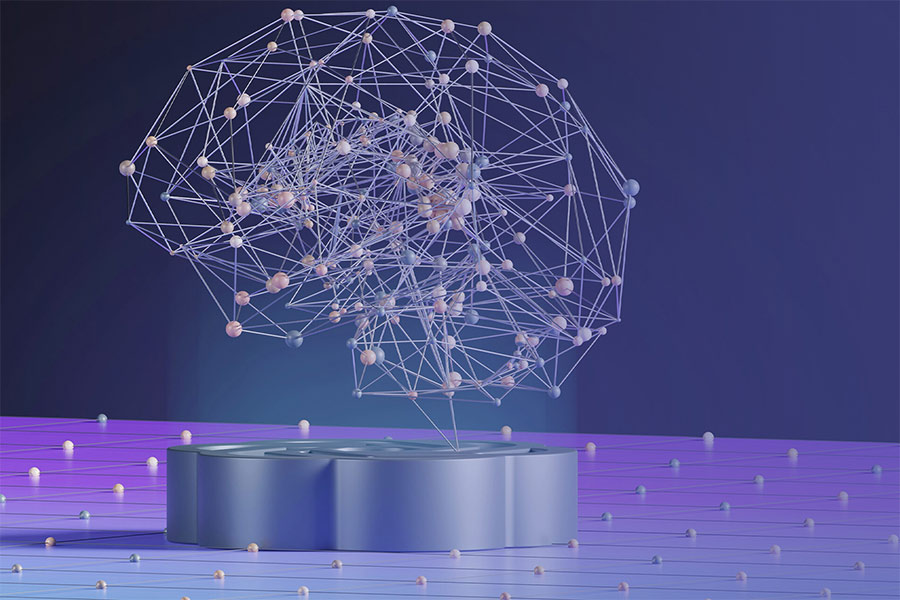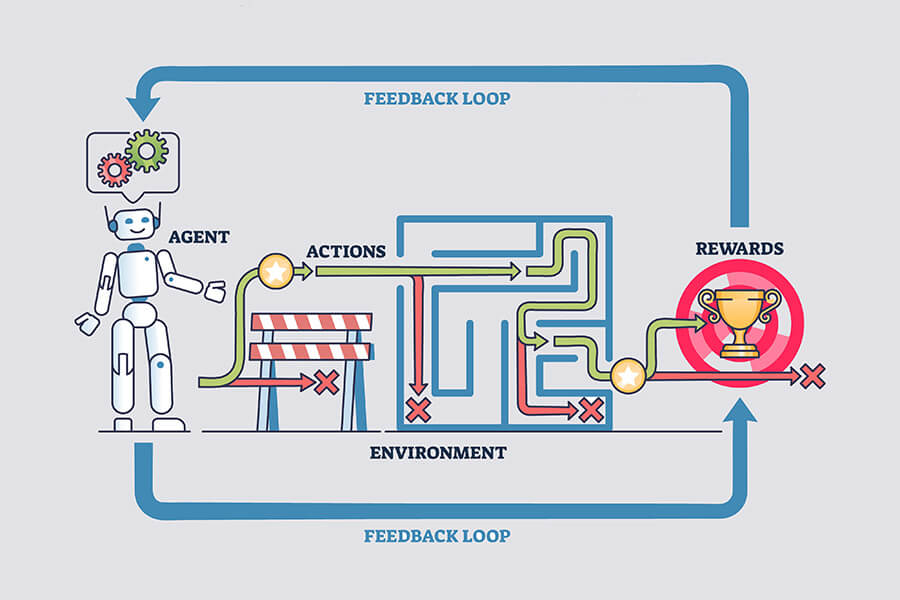The global market for generative AI is expected to reach over $100 billion by 2025. Yet deep learning systems already handle more than 90% of medical imaging data worldwide. This shows a major difference between the two key areas of artificial intelligence (AI).
Deep learning is behind self-driving cars and fraud detection. On the other hand, generative AI systems like ChatGPT and DALL-E are changing creative fields. This fight between deep learning and generative AI marks a critical moment in tech history. Businesses must decide which way will lead to innovation for years to come.
The competition is high in areas like healthcare diagnostics and digital content creation. This article explores how these technologies work together and compete. What will the future of AI bring? Well, this article aims to help readers see which path is best for tackling tomorrow’s challenges in AI.
From Machine Learning to Advanced AI
Artificial intelligence (AI) has grown a lot since its early days. It now includes advanced tools. Machine Learning (ML) is a key part of AI. It lets systems learn from data without being told what to do.
Through ML algorithms like neural networks and decision trees, these systems get better over time. This is how they improve their performance.
These algorithms are the base for specialized AI areas. Neural networks, for instance, are behind deep learning models. They are used in tasks like image recognition and understanding natural language.
Generative AI also uses machine learning to create new content, such as text or images, based on what it has learned from existing data.
This growth shows how AI today is built on machine learning’s basics. Knowing about ML algorithms helps us see how AI tackles significant challenges. These challenges are found in healthcare, finance, and more.
What is Deep Learning? The Neural Network Revolution
Deep learning (DL) turns raw data into valuable insights using layered neural networks. The human brain’s structure inspires it. These systems process complex data through interconnected nodes called neurons.
Unlike biological brains, DL models use mathematical equations to learn patterns.
The Architecture Behind Deep Learning Models
DL’s core is layers of artificial neurons that mimic the human brain. Hidden layers refine inputs, adjusting weights through training data. Activation functions decide neuron outputs, solving complex problems like image recognition or speech translation.
How Deep Learning Processes Complex Data
DL excels at analyzing complex data, such as medical scans or video streams. Unlike traditional methods requiring manual feature selection, it automatically finds important patterns. For example, CNNs detect edges in images to diagnose tumors.
Recurrent networks analyze sequential data in financial forecasts.
| Framework | Key Features | Popular Use Cases |
| TensorFlow | Scalable for large datasets | Self-driving cars, recommendation systems |
| PyTorch | Dynamic computation graphs | NLP, real-time object detection |
| Keras | User-friendly API for prototyping | Image classification, chatbots |
These tools power DL applications in healthcare diagnostics and autonomous vehicles. TensorFlow’s scalability is excellent for big projects, and Keras makes it easy for researchers to experiment.
Generative AI Explained: Creating Rather Than Predicting
Generative AI changes the game by focusing on creation, not just prediction. It produces original content like text, images, and code. This new approach is changing how we use technology for creativity and problem-solving.
The Evolution from Traditional AI to Generative Models
Old AI systems were all about predicting and classifying. But generative AI does something different. It learns patterns to create new content. This means deep learning predicts trends, while GenAI opens up new possibilities for innovation, like art and engineering.
Core Technologies Behind ChatGPT, DALL-E, and Other GenAI Systems
ChatGPT and DALL-E 2 use advanced technology, such as transformer architectures and diffusion models. They work with massive datasets to create content that matches users’ needs. GitHub Copilot does something similar for coding. However, making these models work requires a lot of computing power and special tools.
The Creative Potential of Generative Models
Generative models are making big waves in creative fields. ChatGPT writes articles, DALL-E 2 creates visuals, and GitHub Copilot helps developers. However, there are still hurdles: AI-generated content can be wrong or biased, and it needs human checks to be reliable. These tools are changing industries, but they’re not perfect yet.
Deep Learning vs Generative AI: Core Differences and Similarities
The comparison between deep learning and generative AI shows how they work together but have different goals. Deep learning vs generative AI highlights their primary functions. Deep learning is excellent at recognizing patterns, while generative AI creates new content.
Both use neural networks but in different ways. For example, NLP models like BERT use deep learning to understand text. On the other hand, GPT-4 uses generative AI to make sense and respond.
The main difference between DL and GenAI is in what they produce. Deep learning predicts outcomes, like diagnosing diseases from scans. Generative AI, however, makes original content, like DALL-E creating images or MidJourney designing visuals.
Training methods also differ. Deep learning often needs labeled data, while generative models like Stable Diffusion use unlabeled data. This means generative AI might need more resources during training.
Even with these differences, there are similarities. NLP connects both worlds. Transformers in deep learning power chatbots, while generative NLP creates essays or code.
Businesses must decide based on their goals. Deep learning is better for tasks like fraud detection. However, generative AI is better for creative projects, like creating marketing copy. This comparison shows that they’re not rivals but complementary tools in the AI toolkit.
Real-World Applications: Where Each Technology Shines
Deep learning and generative AI are changing industries in big ways. They offer targeted solutions for different challenges. From helping in healthcare to boosting creative work, they have unique strengths.
Deep Learning Powers Analytical Breakthroughs
In healthcare, deep learning helps analyze medical images. It can spot tumors with 90% accuracy in some cases. This is a big help in cancer screenings. In finance, predictive analytics catch fraud in real-time, helping banks like JPMorgan Chase save money. Autonomous vehicles use deep learning to understand sensor data, allowing companies like Tesla to improve their self-driving systems. Manufacturing uses predictive maintenance to predict when equipment might fail. This cuts downtime by up to 30%.
Generative AI Transforms Creative Workflows
Chatbots and virtual assistants are now key in customer service. Brands like Bank of America use them to handle millions of interactions daily. Adobe’s Generative Fill helps designers, and OpenAI’s Codex assists developers. Generative AI is poised to become the next big revolution for the financial sector.
Spotify’s Discover Weekly uses generative AI to suggest music. This boosts user engagement by 35%.
Hybrid Systems Drive Innovation
Netflix uses deep learning to understand viewing habits and generative AI to generate movie ideas. E-commerce sites use hybrid systems for product descriptions and inventory predictions. These combinations show how predictive analytics and creativity work together, improving user experiences in today’s tech world.
Limitations and Challenges: What Each Technology Struggles With
AI innovations like deep learning (DL) and generative AI (GenAI) have huge potential but face enormous challenges. Understanding these challenges helps businesses and researchers understand their strengths and weaknesses. Here are the main issues that make it difficult for these technologies to be widely used.
| Challenge | Deep Learning (DL) | Generative AI (GenAI) |
| Data Dependency | It needs lots of labeled data, which is hard to find in some cases. | It needs a lot of training data, which can be a problem with copyright and privacy. |
| Explainability | Models are like “black boxes,” making it hard to understand how they make decisions. | It can create believable but false information, which can spread misinformation. |
| Computational Costs | Training big neural networks is expensive and takes a lot of time. | Scaling GenAI models needs even more power, which can harm the environment. |
Both fields face similar challenges. Ethical issues, like bias in training data, are big problems for artificial intelligence (AI). Laws are slow to catch up with AI, leaving a gray area for AI-generated content. Also, adding these tools to current work processes is complicated for companies.
We need to work together to move forward. Developers, policymakers, and users must balance innovation and responsibility.
Industry Adoption: Who’s Using What and Why
Businesses worldwide are deciding between deep learning and generative AI based on their goals. Both are rooted in machine learning but used in different ways.
Enterprise Integration of Deep Learning
Siemens uses deep learning to improve supply chains by analyzing factory data. Google Health applies it to spot diseases in medical scans. Banks use it to catch fraud faster than old methods.
Generative AI’s Rapid Commercial Adoption
The New York Times uses generative AI to make content faster, cutting editorial work by 30%. Autodesk’s Fusion 360 uses it to create custom designs. Startups like OpenAI’s DALL-E and Stability AI’s Stable Diffusion help small businesses make visuals without designers.
Cost-Benefit Analysis for Businesses
Deciding between deep learning and generative AI means looking at costs and benefits. Here’s a comparison:
| Factor | Deep Learning | Generative AI |
| Initial Investment | High (needs GPU clusters) | Moderate (cloud APIs cut costs) |
| Expertise Needed | ML engineers/data scientists | General developers (no ML PhD required) |
| ROI Timeline | 12-18 months | 6-9 months |
| Key benefits | Precision in predictive tasks | Rapid content generation and creative workflows |
When deciding between deep learning and generative AI, companies should consider their needs. Deep learning is best for precise tasks, while generative AI is great for quick and creative work. Some are using both together, like in self-driving cars.
The Next Frontier: Predicting the Evolution of AI Technologies
Experts say the future of deep learning and GenAI, and the impact on business functions, will depend on breakthroughs. They expect to see better efficiency and versatility. New technologies like transformer-based architectures and multimodal systems will combine text, images, and audio.
Companies like NVIDIA and Google are working on making AI faster and cheaper. They aim to let smaller teams use advanced models without huge costs.
Advances in hardware, like AI chips and cloud platforms, will make AI more accessible. Startups and big companies are using tools like PyTorch and TensorFlow. Cloud providers like AWS and Azure also offer more AI services, helping developers worldwide.
Experts think we’ll see AI systems that are both precise and creative. For example, AI might analyze scans in healthcare while GenAI writes treatment plans. Ethics will also play a significant role, with rules for how AI makes decisions.
In the next five years, AI will focus on adapting quickly and using less energy. Advances in federated learning and edge computing could make AI work on devices while keeping data private. Open-source communities and tools like Hugging Face‘s models will help make AI progress faster and more accessible.
Conclusion: Choosing the Right AI Approach for Tomorrow’s Challenges
The debate between deep learning and generative AI shows two different but valuable technologies. Companies need to consider their goals to choose the right one. Deep learning is excellent for analyzing medical scans or improving financial models. It uses tools like TensorFlow and PyTorch for detailed data analysis.
On the other hand, generative AI is perfect for creative tasks. It can create text, images, and code, which helps in marketing and design. This makes it a powerful tool for innovation.
Both have unique strengths. Deep learning is good at finding patterns in big data. Generative AI, however, opens up new ways to create content and interact with users. Businesses should consider their resources and goals.
For example, deep learning requires strong computers, while generative AI might require rules for ethical use. Combining both can be useful in areas like self-driving cars and customer service.
Choosing between these technologies means weighing technical skills against ethics. Both need clear rules for fairness and transparency. Companies should decide if they need prediction or creativity. Being clear about goals helps make the right choice.
As AI keeps getting better, being adaptable is crucial. Keeping up with new tools from Hugging Face or OpenAI helps businesses stay ready for new chances.








